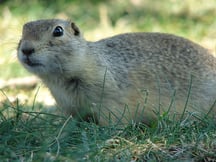Industrious, Hungry, and Not so Funny
They are the scourge of gardens, lawns, nurseries, athletic fields, orchards, golf courses, and other open public areas. Anyone who lives in an area infested with gophers knows the signs - the mounds of fresh soil dotting the ground's surface. One gopher can create several mounds in a day. Mounds can interfere with lawnmowers and severely impact the appearance of lawns. Conditions for digging are ideal
- vines
- shrubs
- trees
- ornamental plants
- vegetables
Hardware Cloth: Protection that Endures
A good mesh to use as gopher wire is ½" x ½" welded wire. This is available in both 19 gauge, hardware cloth, and heavier 16 gauge wire. It comes in both a galvanized after weld and PVC vinyl coated finish. The galvanized finish protects the wire from rust and corrosion. The vinyl coating gives the mesh even longer protection. Widths up to 72" make it easier to cover large areas with fewer joints.
Hexagonal Netting
Hex netting also makes an excellent gopher wire barrier. Vinyl-coated 19 gauge, 3/4" and 20 gauge, 1" meshes are available. As with the welded wire, the PVC coating assures years of use. Lighter weight than the welded mesh products, the hex products are easier to work with. Rolls of 1" hex are available in widths up to 90".
- A burrow system can cover an area of 200 to 2,000 square feet.
- Food storage and nesting areas can be as deep as six feet.
- Feeding burrows with a 3" diameter are most often 6" to 12" below ground.
Do you have a solution that's different from using gopher wire you'd like to share?

![]()
Information source: UC Statewide Integrated Pest Management Program, University of California, Davis, CA 95616







